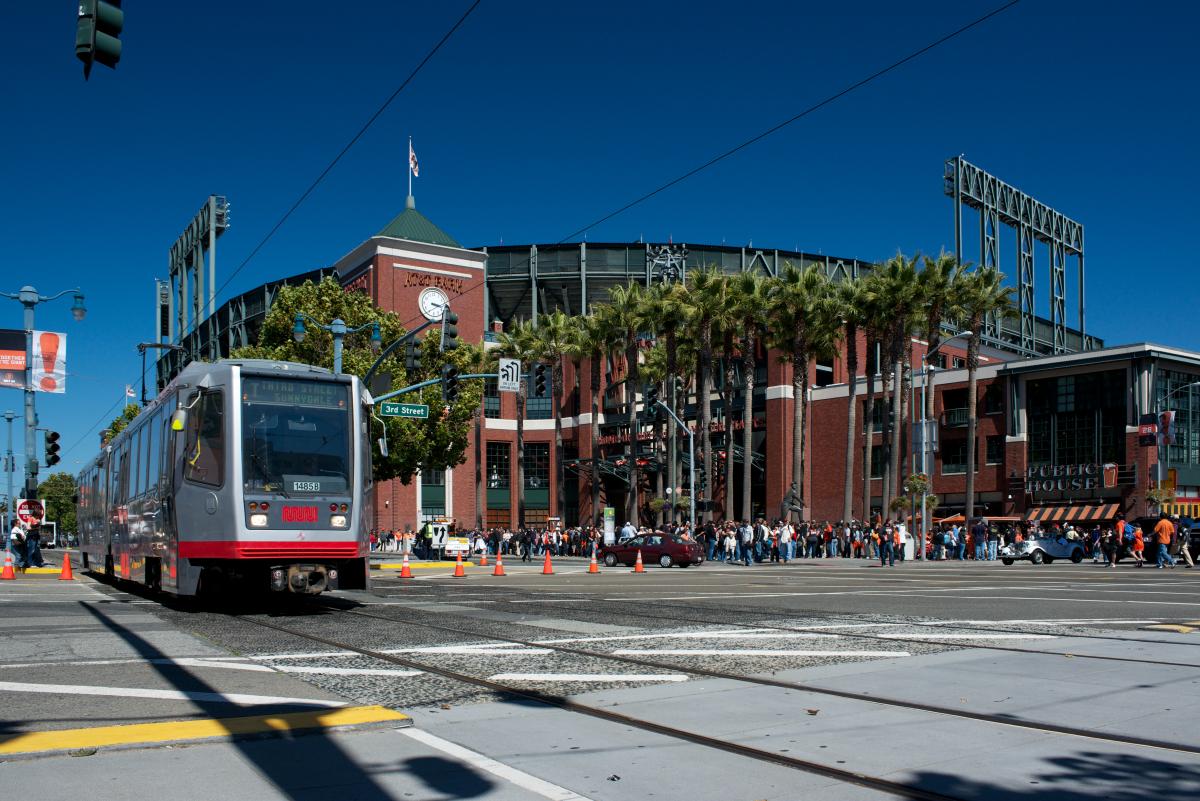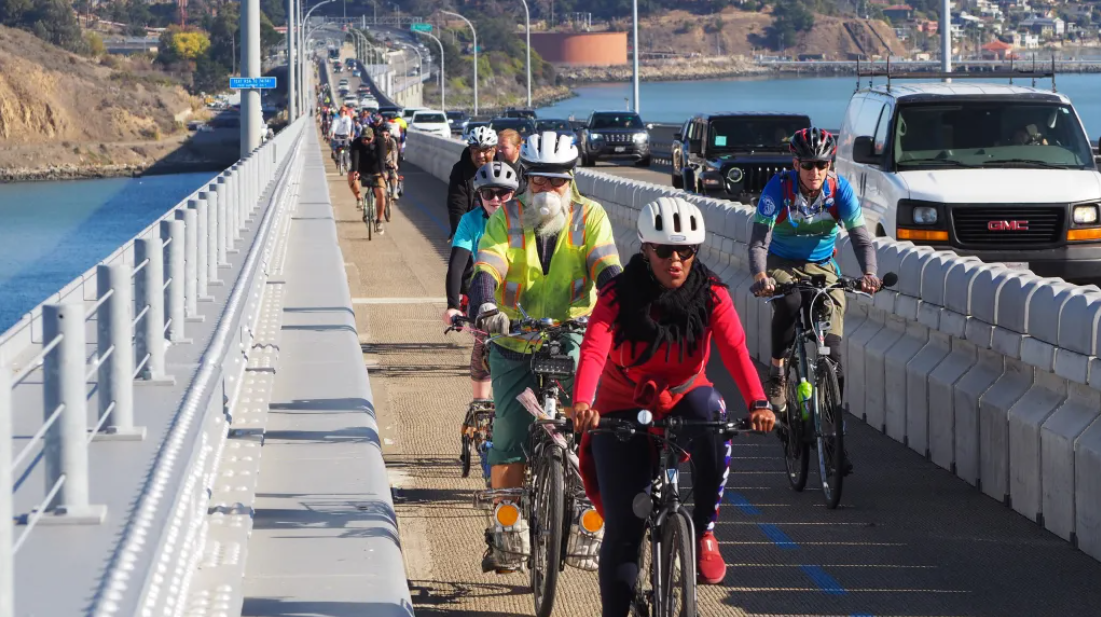Commentary: Build Back Better Transit in the Bay and Beyond
2:13 PM PST on February 4, 2021

Photo: SFMTA
Public transit is key to an equitable economic and social recovery in the post-pandemic Bay Area and in the U.S. as a whole. Just as communities of color and working families have been disproportionately impacted by the COVID-19 pandemic, they will also be disproportionately impacted—either positively or negatively—by how the San Francisco Bay Area and the nation decide to support public transit. Much has been written about the potential transit “death spiral” and some have argued that transit is obsolete. Yet if anything, the COVID-19 pandemic should demonstrate to the broader public and our elected representatives that transit is an essential service—one that needs robust investment now in order to secure a better and more just future.
The Bay Area in particular needs reliable, high-frequency public transit, both to propel and sustain future growth and to meet equity goals to support communities across the region. Throughout the height of the pandemic, transit service in the Bay Area has continued to operate as an essential service, transporting front-line workers and supporting vital economic activity. We know that 87 percet of public transit trips in the US have a direct economic impact on the local economy, while 49 percent of trips are riders traveling to or from work; in November 2020 alone, BART hosted 1.25 million trips and San Francisco’s Muni hosted 4.8 million. Simply put, public transit is, and always has been, an economic driver for the Bay Area, without which the economy and essential services would grind to a halt.
The uncertain post-COVID future of public transit is a disproportionate risk to working families and people of color who are reliant on the service. Nationally, communities of color make up a majority of transit riders, with African-American riders comprising the largest single group within communities of color. Women also account for 55 percent of riders. On average nationally, housing and transportation together account for 50 percent of monthly household expenses; if governments build robust transit as an alternative to expensive personal vehicles, the transportation portion of this equation can be freed up for other uses. Given the Bay Area’s notoriously high cost of living and collateral displacement of communities of color, investing in transit is a clear way to lower living expenses and keep our communities stable and socially and economically pluralistic. The key is maintaining transit’s cost-effectiveness while ensuring frequency and reliability, allowing workers to seek and maintain employment, while also effectively managing child care and other family commitments.
While the worst consequences of service cuts stemming from the economic impacts of COVID-19 have been averted with the help of federal aid, the real challenge lies ahead. As San Francisco Mayor London Breed has stated, “we are facing the gutting of a basic city service that residents rely on and our economy needs to recover.” However, now is also an opportunity to build a better transport system that supports both the economy and equity. With a new presidential administration that, through its climate plan, has the goal of “empowering local communities to develop transportation solutions,” the timing is right. Delivering this kind of transit renaissance in the Bay Area and across the country will require strong funding, planning, and management:
- Funding: Federal support is critical. The approximately $2.3 billion in federal pandemic relief received to date by Bay Area transit agencies has helped sustain transit service levels in the short-term, but it is not enough to sustain the robust public transportation system we need over the long term. The threadbare and outdated 1982 “80-20 split” in federal transportation spending must be changed to benefit transit, recognizing that economic returns from public transit are $5 for every $1 invested. Under the current 80-20 split, however, highways arbitrarily receive 80 percent of federal funds and transit is allocated 20 percent.
- Planning: Plans already exist for a better transit future in the Bay. The Metropolitan Transportation Commission recently issued its Plan Bay Area 2050 blueprint, which includes concrete objectives for restoring transit service to pre-COVID levels, including equity goals to reduce low-income households’ transportation costs as a share of income. Greater regional collaboration can lead to improvements in planning transit as a network, and shaping growth with an eye toward equity goals.
- Management: The San Francisco Municipal Transportation Agency’s state-of-good repair and asset management program are examples of how system needs can be evaluated and prioritized to enhance reliability. These efforts must be viewed through the lens of equity and social gains and balanced against appealing to more affluent commuters.
Some may argue that with the rise of remote work, cities and surrounding suburbs will no longer need dependable public transit for the economy to function. While no one knows for certain what post-pandemic cities and workplaces will look like, urban environments will likely remain desirable places to live. As the University of Toronto's Richard Florida wrote, “predictions of the death of cities always follow shocks like this one. But urbanization has always been a greater force than infectious disease.” Under any scenario, there will always be essential workers and transit-dependent riders who need public transport, and we cannot risk calamitous increases in traffic congestion and its attendant pollution if workers are forced to commute by a personal vehicle when offices reopen in urban cores.
Transit is essential to the economic and social viability of the Bay Area and U.S. The window is open to build a better and more equitable transit system and remedy the errors of the past. Citizens and policymakers must seize on existing plans and build a better future that works and moves for everyone.
A version of his post also ran in the New America CA blog
Stay in touch
Sign up for our free newsletter
More from Streetsblog San Francisco
Commentary: Merchants Are Getting People Killed
The number one local obstruction to curbing traffic violence is commerce and merchant groups.




